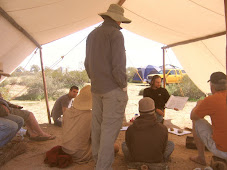This blog post is adapted from a paper I wrote in 2007 called, "Modern Health, Primitive Wisdom: American Health History and the Findings of Weston A. Price." Enjoy!
One dietary characteristic that was readily apparent in the traditional primitive cultures of Weston A. Price’s studies was the lack of modern, processed foods. There was in these cultures a widespread use of foods high in nutrient content and comparatively low in calories. When processed foods replaced traditional foods, physical deformities and ill health followed. This pattern of less consumption of nutrient-dense foods and greater consumption of processed modern foods has happened in the United States just as it has in the primitive cultures of the world.
A look around the American population with Dr. Price’s discoveries in mind quickly reveals the state of health in our country today. It's common for modern Americans to require braces and other dental corrections, as well as frequent visits to the doctor due to general illness, such as flu, colds, and other symptoms of lowered immunity. As Dr. Price noted in Nutrition and Physical Degeneration, it only takes one generation of men and women who regularly displaced their native foods with processed foods to give birth to children displaying physical irregularities and exhibiting lowered immunity to disease. These deteriorations are now commonly observed in modernized societies, like the United States, where a large proportion of the foods eaten are processed and devitalized.
Comparing American eating and disease patterns in 1900 to those in 2000, one can find several significant changes that have taken place over the last century. In 1900, Americans ate mostly whole foods, although substantial amounts of processed foods were eaten as well. The whole foods eaten by turn-of-the-century Americans included untrimmed meats from pasture-fed animals, fresh vegetables and fruits, grains, and fats like butter, lard, and coconut oil. Of course, this diet differs significantly from the foods Americans eat today: vegetable oils, refined and “enriched” grains, simple starches, sugar, and factory-reared grain-fed meats (in a few words: fast food). Table 1 provides an overview of the changes in American disease patterns before (1900) and after (2000) these processed foods fully crept into the food supply.
Table 1. Leading Causes of Death in 1900 & 2000*
1900_________________% Total_______2000__________________% Total
Tuberculosis.......................11.3...........Diseases of Heart.................31.4
Pneumonia.........................10.2...........Cancer .................................23.3
Diarrheal Diseases..............8.1............Stroke...................................6.9
Heart Disease......................8.0...........Lung Disease........................4.7
Liver Disease.......................5.2...........Accidents..............................4.1
Injuries.................................5.1..........Pneumonia & Influenza.........3.7
Stroke..................................4.5...........Diabetes Mellitus...................2.7
Cancer..................................3.7...........Suicide................................1.3
Bronchitis............................2.6...........Kidney Diseases....................1.0
Diphtheria...........................2.3...........Liver Disease & cirrhosis..........1.0
*Adapted from Food Politics (Nestle 2002, 32)
In Table 1, it can be seen that the shift in American health over the last century has been one of major transition. In 1900, many deaths were due to infectious diseases or injury (6 of 10). This was an era when hygiene was not fully understood and such untimely deaths were commonplace. Heart disease and cancer -- the diseases of modern man -- are seen occurring in moderate percentages during this time. Flash forward to 2000, following many years of processed food consumption, and a very different picture is painted. Almost all of the top diseases (8 of 10) causing death at the time of the millennium are chronic degenerative conditions. The numbers for heart disease and cancer top the list, increasing by four and six times respectively compared to 1900.
The drastic changes in American disease patterns require a broad perspective to fully comprehend. As stated before, in addition to dietary changes, many environmental changes (crowded living conditions and an inadequate food supply) no doubt had a prime role to play in the shift in health that took place over the last hundred or so years. This is one reason why the average lifespan in the United States in 1900 is commonly believed to be far less than it is today. The average lifespan data during this time is also influenced by untimely deaths, such as infectious disease, injury, lack of food, and miscarriages.
Stay tuned for the next post titled, "Were Early Americans Really Living Shorter Lives?"
Wednesday, April 29, 2009
American Health Then & Now
Labels:
American health history,
anthropology,
diet,
health,
human lifespan,
nutrition,
Weston A. Price
Subscribe to:
Post Comments (Atom)




4 comments:
BTW, if anybody would like to give me some pointers on making a table or graph on blogger, I would greatly appreciate it!
Tables, cut and paste from Microsoft Word, or Open Office. The HTML is ugly, but it works.
For figures, you'll want to make them in a 3rd party software, save them as an image, and then upload as such. I would recommend Octave (an open-source version of MATLAB) or R, if you're willing to do some learning.
http://www.gnu.org/software/octave/
http://www.r-project.org/
I like that you're dispelling the myth that lifespans used to be much shorter than they actually were...I have to argue that point often when I state that "primitive" people had much better health then we do now. They fail to realize that we have fewer deaths from degenerative disease today because of our medical technology, but not fewer incidences of disease itself.
If you don't mind me asking, what/who did you write that paper for?
Robert,
Thanks for the tips. It was pretty annoying to have to space everything in the table with periods!
Harper,
It's definitely a common misconception that the primitives' lives were "nasty, brutish, and short." I always hear that people "only lived to be 40" or something along those lines, which is very debatable. My next post will provide you with some more ammo to gun those naysayers down.
I wrote the paper for my undergrad program through Prescott College. It was a home-study, self-driven degree program which suited me quite well!
Post a Comment